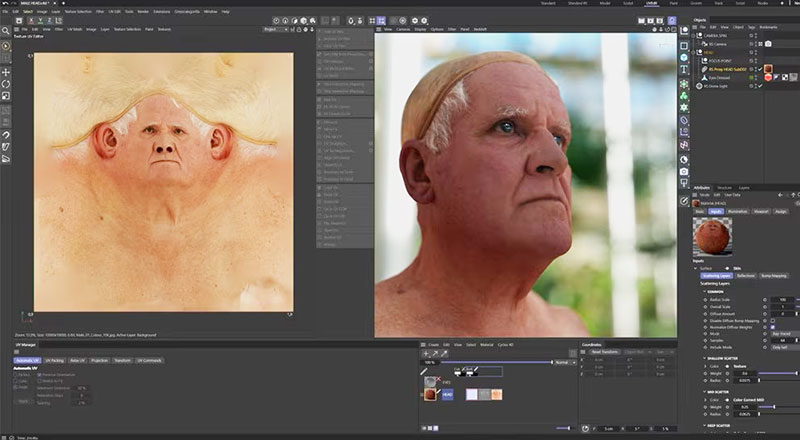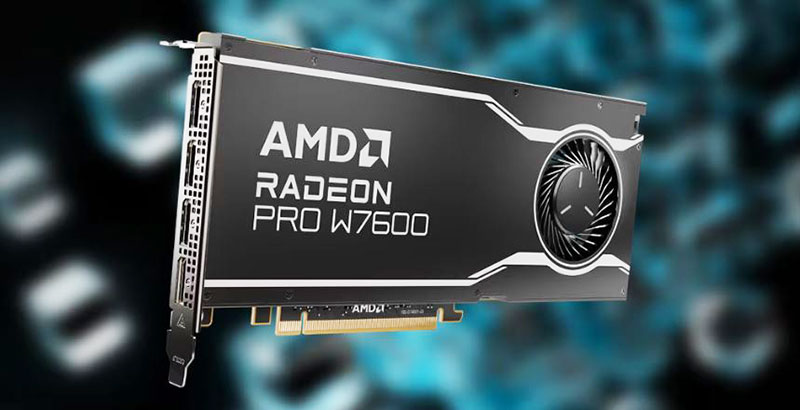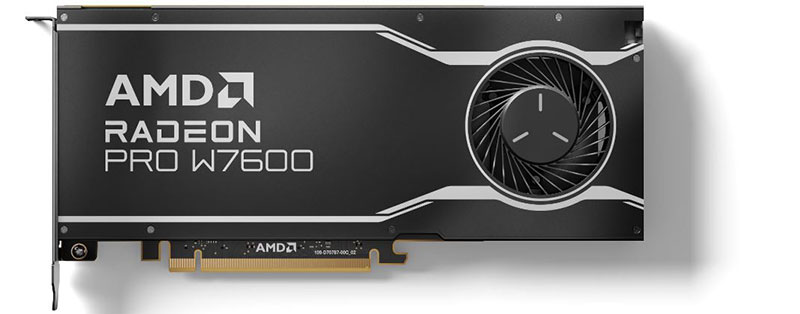AMD’s two graphics cards focus on efficiency, stability and performance using RDNA 3 architecture and 8GB of GDDR6 memory to support data-intensive tasks and ray-traced renders.

AMD has developed two new workstation graphics cards in the Radeon PRO W7000 Series - the AMD Radeon PRO W7600 and AMD Radeon PRO W7500. The cards are designed for professional workloads across industries ranging from Media & Entertainment to Design & Manufacturing, and Architecture, Engineering & Construction.
The Radeon PRO W7600 and Radeon PRO W7500 graphics cards focus on efficiency, stability and performance, using AMD RDNA 3 architecture and including 8GB of GDDR6 memory to support data-intensive tasks and detailed, realistic ray-traced renders. They are built on AMD’s existing Radeon PRO W7900 and AMD Radeon PRO W7800 cards, but address a wider market segment that works on mainstream workloads. The build emphasises visual fidelity with high performance for mid-range professional graphics, instead of extreme amounts of graphics memory.
AMD RDNA 3 Architecture
AMD RDNA 3 Architecture features redesigned compute units with AI accelerators, second-generation AMD Infinity Cache and second-generation raytracing. It also has optimisations for 3D modelling, animation, rendering, video editing and general multitasking to support AEC, D&M and M&E workflows.

RDNA 3 uses modular chiplets, extremely small integrated circuits that each hold a specific subset of functionality and are designed to be combined with other chiplets. RDNA 3 contains up to 96 graphics Compute Units supplying up to 61 TFLOPS of compute. Each RDNA 3 Compute Unit contains one ray tracing accelerator so that the overall number of ray tracing accelerators is high.
RDNA 3 also has dedicated AI acceleration that can improve performance and support ray tracing instructions. It is the first RDNA architecture to have a dedicated media engine, with an encoding and decoding core that can handle a high number of simultaneous encoding streams, as well as high resolutions, wide colour gamut and HDR enhancements. The cache set-up is enhanced to increase bandwidth.
RDNA 3 was designed to support high clock speeds. However, the clock speeds have been decoupled – the shaders operate at a slightly lower rate in order to save power but are still very fast, running at about 2.3GHz. RDNA 3 GPUs use GDDR6 memory rather than faster GDDR6X, again, to lower power consumption but still handle data-intensive tasks and enable complex, realistic ray-traced renders.
Radiance Display Engine - 12-bit HDR Colour Support
AMD’s Radiance Display Engine with DisplayPort 2.1 includes 12-bit HDR colour support and over 68 billion colours. The display outputs support the new display hardware and multi-monitor configuration options to help design immersive visual environments.

All AMD Radeon PRO workstation graphics are supported by AMD PRO Edition Software to control its user interface. AMD continues to work with professional software application vendors to keep its certification program up to date and its drivers optimised, and to make sure AMD Radeon PRO graphics cards have the performance and stability to handle 24/7 environments. The list of certified applications can be found here.
The new AMD Radeon PRO W7000 Series workstation graphics cards are available now with an estimated price of $599 USD for the Radeon PRO W7600, and $429 USD for the Radeon PRO W7500. Product availability in OEM workstations and SI systems is expected to begin later in 2023. The cards will be on display 8-10 August at SIGGRAPH 2023 in Los Angeles. www.amd.com




